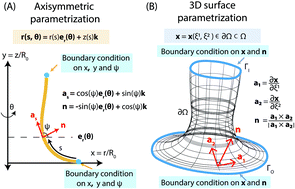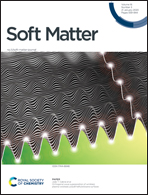A mechanical model reveals that non-axisymmetric buckling lowers the energy barrier associated with membrane neck constriction†
Abstract
Membrane neck formation is essential for scission, which, as recent experiments on tubules have demonstrated, can be location dependent. The diversity of biological machinery that can constrict a neck such as dynamin, actin, ESCRTs and BAR proteins, and the range of forces and deflection over which they operate, suggest that the constriction process is functionally mechanical and robust to changes in biological environment. In this study, we used a mechanical model of the lipid bilayer to systematically investigate the influence of location, symmetry constraints, and helical forces on membrane neck constriction. Simulations from our model demonstrated that the energy barriers associated with constriction of a membrane neck are location-dependent. Importantly, if symmetry restrictions are relaxed, then the energy barrier for constriction is dramatically lowered and the membrane buckles at lower values of forcing parameters. Our simulations also show that constriction due to helical proteins further reduces the energy barrier for neck formation when compared to cylindrical proteins. These studies establish that despite different molecular mechanisms of neck formation in cells, the mechanics of constriction naturally leads to a loss of symmetry that can lower the energy barrier to constriction.



 Please wait while we load your content...
Please wait while we load your content...